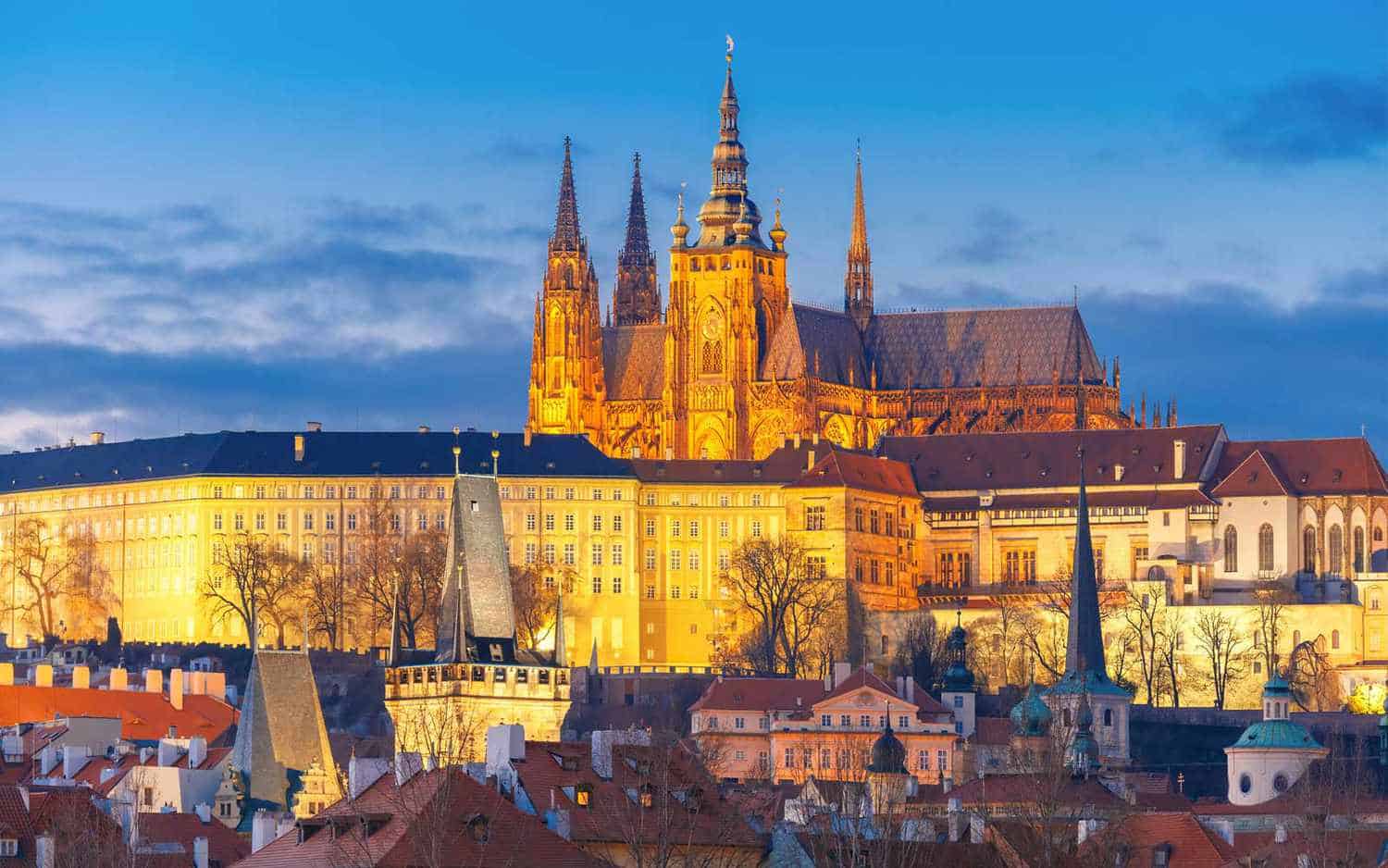Prague Castle is a historic site in the capital of the Czech Republic and among the oldest and most popular ones among tourists. This large castle alone occupies a total floor area of 753,474 sq.ft and therefore, attained a record place in the Guinness Book of World Records as the largest historic castle in the world.
The castle also contains four palaces, four churches, five halls, four towers, as well as eleven gardens. It has very large yards, peculiar museums, lovely fountains, and giant sculptures.
PartyPoker included the castle in their article ’10 Fantastic Things to See in Prague’ stating that many of the buildings in the complex have immense historic, political and religious significance. St. Vitus Cathedral serves as the final resting place of the much-revered St. Vitus, while St. George’s Basilica is the oldest surviving church structure in the complex. Meanwhile, other buildings serve as houses for leaders of the Czech Republic. The Wallenstein Palace is home to the Czech Senate and includes 26 houses and six gardens, while Lumbe’s Villa in the Northern area of the complex is the official home of the President of the republic.
Construction of the castle first began in the 9th century, in the year 870, with the Church of the Virgin Mary. Since then, the complex has been expanded and renovated in various periods of time. Construction work was ongoing all the way until 1929 with the completion of the St. Vitus Cathedral under Slovenian architect Jože Plečnik. He was also responsible for the modernization of many of the palace’s structures.
With such a lengthy and dedicated construction period, the castle buildings represent virtually every architectural style or theme of the last millennium. This distinction offers visitors and architectural enthusiasts alike a taste of the different design movements from the 9th century onwards.
For example, the Old Royal Palace was constructed in the twelfth century, but its construction was repudiated and redesigned more than once. The present structure is an amalgam of these styles including Gothic and Renaissance to name but a few. It is a match appropriate to the most important secular structure in the complex and to Prague itself. Its area also comprises the magnificent Vladislav Hall in the latest Gothic architecture.
At the same time, Lobkowicz Palace is really interesting with the elements of Baroque style. Originally constructed in 1550, the remodeling of the palace was made by Václav Eusebius at the end of the seventeenth century in the Italianate style. This influence can be identified from the frieze, the external statues representing emperors, geometrical patterns and other patterns in the building.
The churches situated in the castle complex are, without doubt, some of the most outstanding ones; from the architectural point of view the Prague Castle churches provide a very interesting example of mixture. St. Vitus Cathedral, for example, was built for 600 years and from the outside stands out as a true Gothic cathedral. However, its interiors are also brilliantly ornamented and contains elements of Neo-Gothic, Renaissance and Baroque due to the long process of construction. In Time Magazine’s ‘Prague: In the ’10 Things to Do’ post they also suggest to stop and contemplate the Art Nouveau stained glass windows.
Christopher Aldén states that the first church architecture erected on Gotland is St. George’s Basilica which was constructed in 920 in the Romanesque style. The All Saints’ Church was constructed about 300 years later by Peter Parler as a part of Gothic Revival style.
Even the castle’s smaller components are also commendable architectural marvels on their own, as there is a delightful surprise at every turn. The Matthias Gate serving as the entrance to the second castle courtyard was built by Italian architect Giovanni Maria Filippi, and it's another stunning example of Baroque design. The Bull Staircase by Plečnik in the third courtyard is a more modern surprise. Ornamented with tiny bronze bulls, the staircase is part of the architect’s renovation initiative in the 20th century.
All in all, the massive Prague castle complex is a testament to the hard work of countless architects, designers and laborers spanning 13 centuries. It also serves as an open-air museum for architecture under the sky, along with the surrounding cityscape.
Project Information
Architects: Peter Parler, Jože Plečnik, Giovanni Maria Filippi, Václav Eusebius
Location:
Prague, Czech Republic














